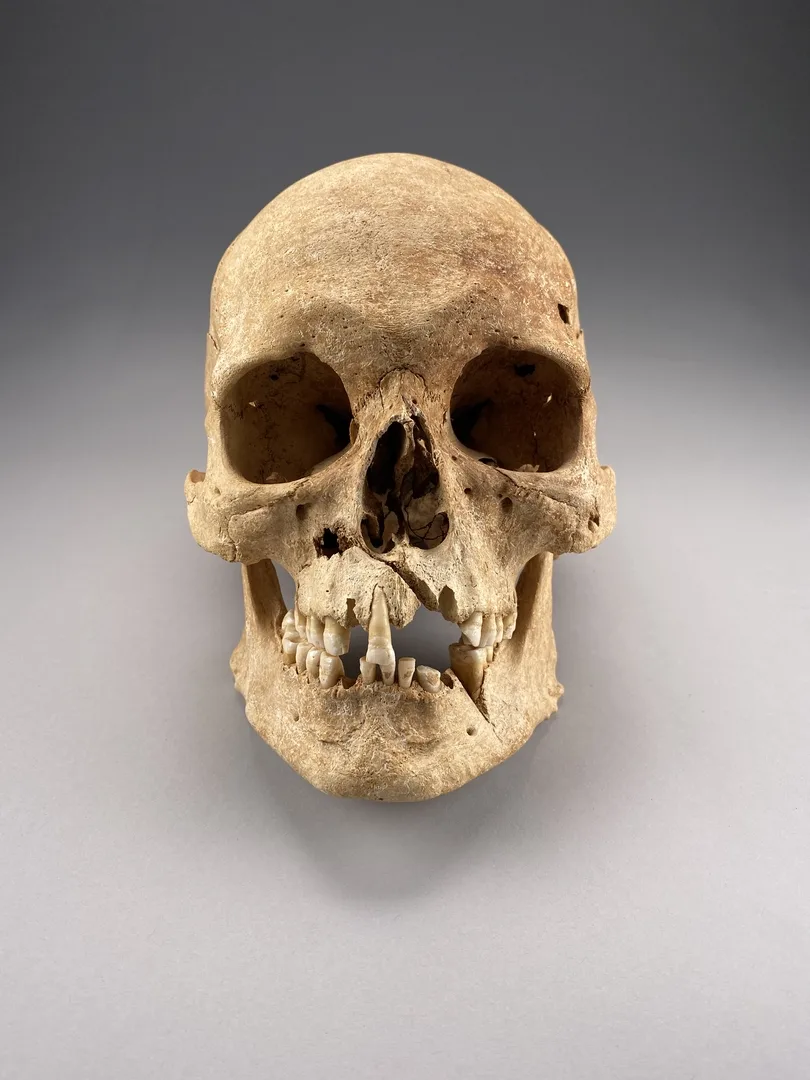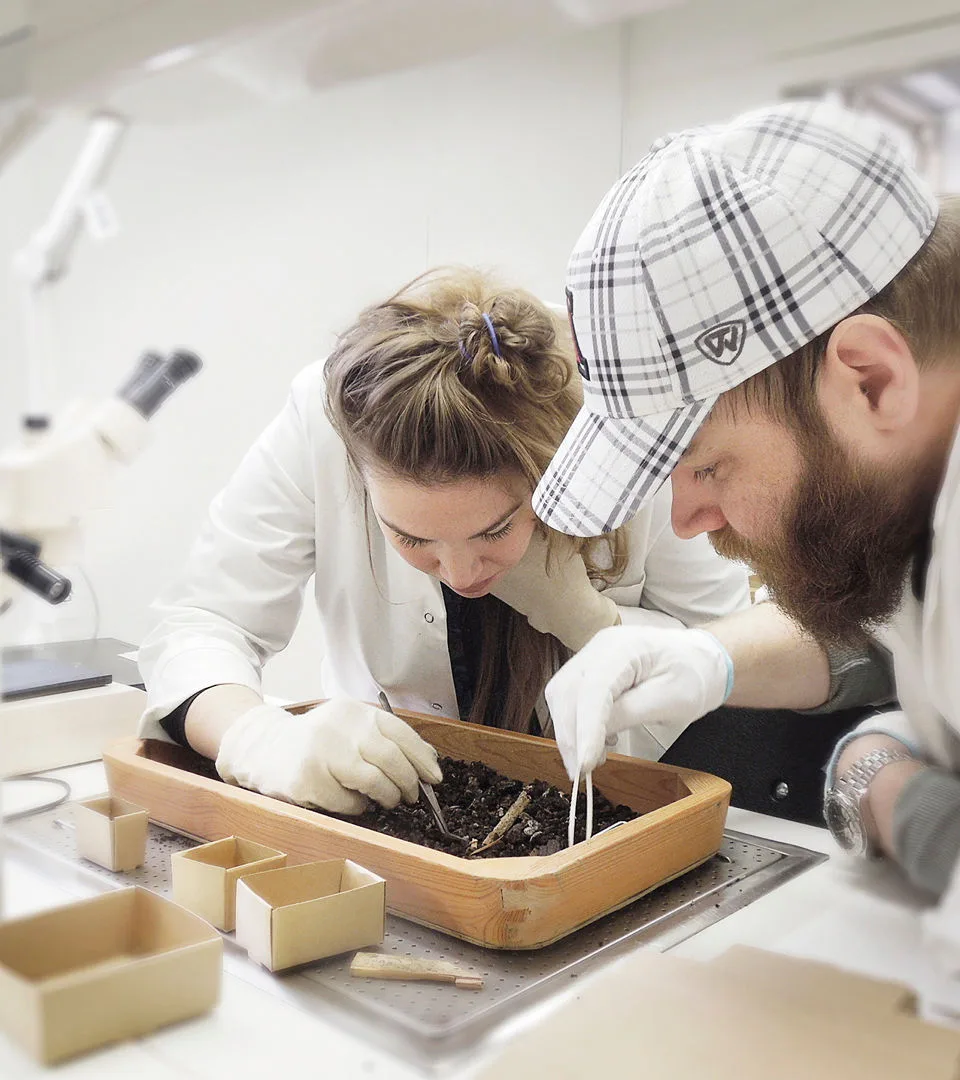Skull from the Battle of Visby
Viking Age
AD 800 – AD 1100
Middle Ages
AD 1050 – AD 1520
Modern Age
AD 1520 – AD 2025
The Battle of Visby in 1361 was unusually bloody. This is clear from the injuries seen on the skeletons. Bones from the excavated mass graves show many brutal cuts and suggest several types of weapons were used. Some victims may have been attacked by different opponents, or a single opponent may have used multiple weapons.
The most visible wounds on the skeletons are on arms, legs and skulls, since the torso was probably protected by chainmail and shields. The force of the blows was often very strong. One example is a skeleton where both lower legs were cut off in a single strike.
The severed feet were still attached to the legs by shreds of muscle and tendons and lay beside the skeleton in the grave. Up to 15 different holes and cuts have been found on a single skull, while the rest of the body was also struck multiple times. It seems arrows came from every direction — either the wounded turned during the fight or they were caught in a rain of arrows, probably both. The battlefield must have been a terrifying sight.

Skull from the Battle of Visby
The original skull that has been 3D-scanned.
On view at Historiska museet in the exhibition Massakern vid muren
In this case, the attackers were King Valdemar Atterdag and his army of hired mercenaries — professional soldiers paid to fight in wars. Against them stood Gotland’s farmers, both young and old, trying to defend their land.
At the Swedish History Museum, you can visit the exhibition A Medieval Massacre. As the name suggests, it was a true massacre — about 1,800 farmers met a brutal death. In the exhibition, you can see several skulls with visible injuries, including one that has been 3D-scanned so you can study it up close.
3D-model: Cranium from the Battle of Visby
3D-model of a cranium in the collections of the Swedish HIstory Museum.
Digitisation in 3D
The Swedish History Museum is part of the government agency National Historical Museums. The organisation is constantly working to digitise its collections. One example of this work is the creation of 3D models of some of the museum’s objects.
How is a 3D model made?
A photographer takes a large number of still photos of an object from different angles. These images are then processed by computer software to create a digital version of the object – a 3D model. This technique is called photogrammetry or Structure from Motion (SfM).
In this way, 3D models of objects from the museum’s collections are continuously being created. The models are made available on the platform Sketchfab.com, where you can view, download and freely reuse them under an open licence. Have you used our 3D models to create something you’d like to share with us? Or would you like to get in touch with the department responsible for the 3D models? Feel free to email: bilder@shm.se





